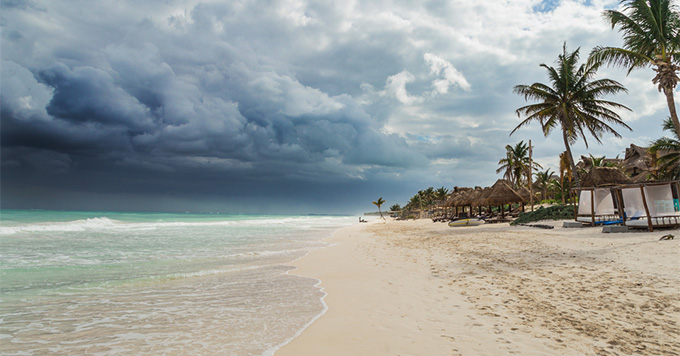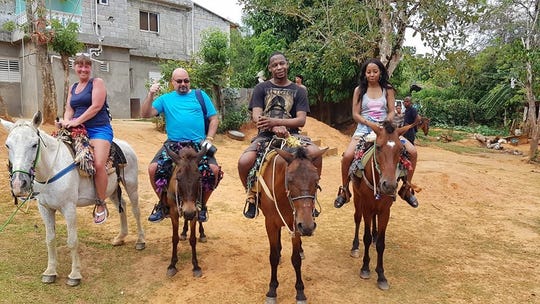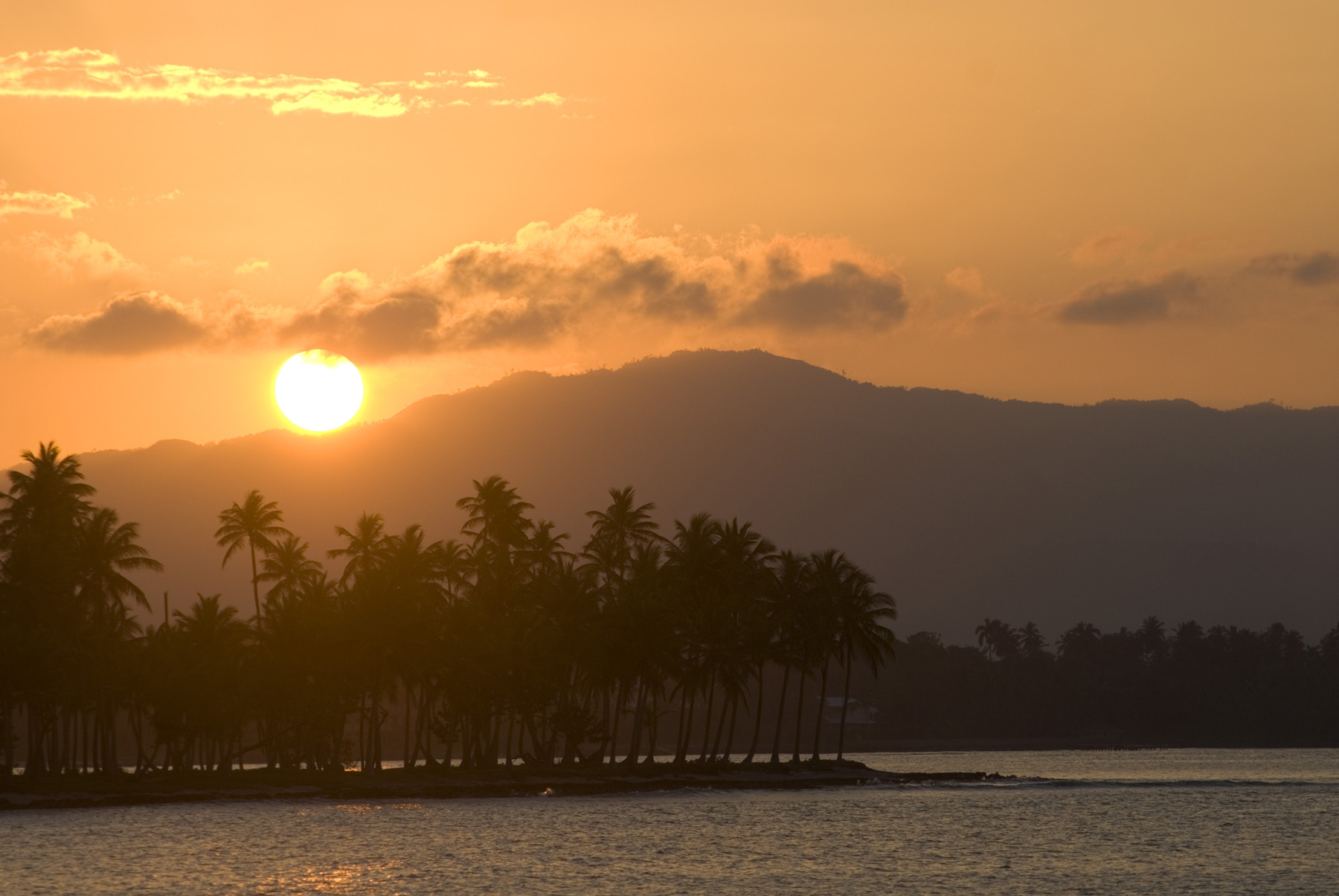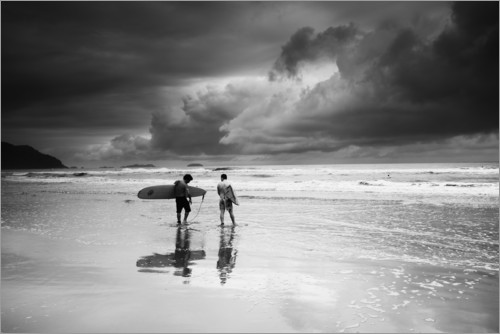American tourist deaths in the DR: the view from ground zero
Renn Loren
There’s a surrealistic yellow-peach weird glow to the eerily hazy cloud-strewn summer sky imparted by high altitude particulates launched by dust storms in the Sahara 5,928 km (3,683 miles) across the Atlantic Ocean to the east. The ethereal weird aureate luminescence gives the impression of seeing things through a camera filtered to instill the scene with a retro alternative universe ambiance fitting for the untethered strangeness of these times.
Anyone who is even remotely aware of current news cycles knows that there has been an ominously negative focus on Dominican tourism lately due to a series of as yet unexplained and mysterious deaths which raise flags of suspicion and mistrust in both the US and the DR.
The fact that all the victims have been American, coupled with the coincidental proximities of these tragic incidents further adds to the suspicions.
Contributing significantly to all the mystery and perplexity of the situation and reportage of these events has been the fact that the accounts and findings of local Dominican authorities have themselves been somewhat contradictory, inconclusive or merely confused.
This complex, muddled, and inconsistent ravel of information could only be expected to cause mass suspicion, conjecture, speculation, fear, and distrust.
Today’s situation of the DR’s being cast in a resoundingly negative light as a tourist destination began with an enigmatic as yet unsolved incident where Mt. Vernon couple Orlando Moore, 43, and Portia Ravenelle, 51, went missing March 26, 2019, on their way back to the airport in Santo Domingo. They were driving their rental car from their stay at the Grand Bahia Principe Cayacoa in Samaná over 100 miles from the AILA Las Americas airport. Despite several overheard protestations from Ravenelle, Moore decided to drive back in the night: a thing which even Dominicans prefer to avoid. The two had been drinking throughout the day with another couple. According to the Canadian couple they were last seen with, they had shared a bottle of rum before driving off somewhere between 10 and 10:30 p.m. to catch their 2:00 a.m. return flight to New York.
The couples’ rental car was last seen passing through a toll booth at 1:41 a.m. near the Las Americas highway on March 27. Portia Ravenelle found in critical condition lying near the road had no identification and was transported to the hospital unconscious. Police recovered Orlando Moore’s body from the sea 13 miles from the submerged car wreckage on March 31st. A tattoo on his arm identified Moore’s remains. Ravenelle died eight days later on April 4th still unidentified, having never awoken from her coma.
Although no official cause was found for the crash, it is presumed that a combination of alcohol, stress, high speeds, and night driving all contributed to the tragedy. The accident occurred on a stretch known to be dangerous. There had been several other crashes in the area during daylight hours.

From left, Canadian couple Cheryl Freeman and Carter Warrington met Mount Vernon couple Orlando Moore and Portia Ravenelle in the Dominican Republic on March 25, 2019. Moore and Ravenelle went missing two days later. (Photo: Courtesy of Cheryl Freeman)
State Department alerts for travel to the Dominican Republic focus on high levels of serious crime in the country. But the agency’s 2018 Crime & Safety Report for the state also advises travelers to refrain from driving unless they are familiar with the country’s roads.
“Travel at night on intercity highways and in rural areas can be extremely dangerous and is not advised due to animals on the road, poor road conditions and vehicles being driven at either very slow or excessive speeds, often with malfunctioning headlights or taillights,” the report notes.
In 2016, the Dominican Republic had an estimated 34.6 road deaths per 100,000 residents, according to the latest WHO report, more than double the worldwide median of 15.9. The United States had 12.4 road deaths per capita.
The figures for the Dominican Republic were down from six years earlier when the country had the world’s highest per capita rate of road deaths.
Speaking as one who knows the land locally and well I will say that driving in the DR is rife with challenges, is quite dangerous, and no one who doesn’t have to would choose to drive at night on certain roads or highways – and that includes Dominicans.
If we add Moore and Ravenelle to the list of questionable mysterious American tourist deaths in the DR since March 2019, the total is somewhere around twelve American tourists who have died under unknown and some as yet unsolved circumstances in the past three months. https://www.bbc.com/
The remaining at least ten perhaps even more puzzling deaths have been those of other American tourists who were found dead in their rooms or died soon after having fallen suddenly ill often after drinking from the hotel minibar. Many fell sick and died in the same hotels. To further muddle the situation, other tourists have reported either becoming ill themselves on previous trips or relatives having also died at one of the same resorts. To even the most casual of observers, there would seem to be a pattern.
The FBI has been called in to help with the investigations, and the results of several toxicology tests are pending.
One possibility under investigation is that some of the alcohol has been tainted or was of illegal origins and therefore contaminated with methanol or some other impurities or toxins. Another theory involves more insidious tampering with minibar drinks. One former hotel guest has reported having accidentally drunk from a soda bottle filled with bleach. Whether this was intentional or not remains unknown at this point.
To make matters worse some American media, news cycles, and attendant social networks recently began to conflate lethal and non-lethal incidents from last year along with cases of non-fatal illnesses: all of which are irrelevant and inaccurate as pertaining to incidents involving fatalities and seeks to connect and entwine those events to the current suspicious string purely for dramatic effect.
There are occasional breakouts of highly contagious, chlorine-resistant waterborne illnesses such as Cryptosporidium and Giardia that sicken hotel guests and these were the likely causes for the maladies experienced by several members of a group of former students of Deer Creek High School in Edmond, Oklahoma who became unwell while on a trip celebrating their graduation.
The group of about 75 former students and their chaperones were staying at the Hard Rock Hotel and Casino in Punta Cana, where three Americans died in April and May.
A group of Jimmy Buffett fans also became violently sick while staying at the Hotel Riu Palace Macao in the Dominican Republic.
The Central Oklahoma Parrothead Association had 114 of its members staying at the Punta Cana resort during a trip in April. According to travel Agent Dana Flowers, 47 of them got sick, including him.
“We were enjoying the beach and the pool, and about three or four days into the trip we started hearing about people getting sick,” Flowers told People Magazine. “They were getting diarrhea, vomiting, dizziness, headaches.”
Both of these groups seem to have suffered “Montezuma’s Revenge,” which is a colloquial term for traveler’s dysentery contracted in Mexico. The condition is caused by pathogens such as E.Coli, Cryptosporidium, Giardia, and others. There are a few waterborne parasitic amoebae and bacterial infections in the DR. As these conditions are incredibly unpleasant but not commonly fatal they should not be reported in connection with the much more serious events that have occurred in the country involving the deaths of American tourists. After all, a stomach illness could be picked up anywhere – including the US.
The accounts of some of the people who survived incidents of sudden unexplained illnesses during their Dominican resort vacations relate symptoms, reactions, and damages entirely consistent with Paraquat or organophosphate poisoning. Paraquat and organophosphates are components of herbicides and insecticides and are used fairly commonly in the DR. This may account for some of the cases. However, the hows and whys remain unanswered.
Adding to the ominous atmosphere of chaos and confusion is the still-unsolved assault of Tammy Lawrence-Daley at the Majestic Elegance Resort in Punta Cana. Lawrence-Daley retained all of her personal belongings – including cell phone and purse – and tried to file a failed lawsuit for $2.2 million months later with conflicting stories and inconsistencies between given and official reports. And of course, the international headline-grabbing case of the mistaken identity shooting of David “Big Papi” Ortiz that happened Sunday, June 9th in full view of the public at the Dial Bar and Lounge in Santo Domingo.
While all of these tragically unfortunate and alarming incidents and events have happened in a suspiciously coincidental and somewhat consecutive time frame that seems to link a pattern or overly-high probability for violence and severe misfortune to the national character of the Dominican Republic as a norm; it is not the norm. Not even close.
It is too early to know if these so far exclusively American tourist deaths have been some extremely odd horrendous coincidence or if something far more nefarious and malicious lies behind them. At this point, it does seem incredibly suspicious that so many exclusively American tourists would die in such a short period under such strangely similar circumstances. Death from natural causes is not an answer. We all need to know what precipitated those deaths by natural causes.
If there has been a sinister deliberate cause behind these deaths, then we must believe that the Dominican and American criminal authorities will take the proper steps to solve the mystery and provide answers, hold those responsible for such despicable acts accountable, and initiate enhanced and expanded security for the safety of future guests.
As one who knows this country from the inside, viewed at a ground level through my own experiences and those related to me through daily exchanges with expatriates and Dominicans alike, it must be said that we don’t feel particularly threatened, or any less safe now than we did before the mass media circus surrounding these events took place.

In truth, the Dominican Republic is about as safe or dangerous as any other nation with 10 million-plus inhabitants. There are hazardous areas, and there are criminals: as there are everywhere else in the world today. The big question and mystery here are: why there have only been deaths of exclusively American tourists in the relatively short time frame from April to June 2019 and why have they happened under such similar situations or circumstances, in such coincidental proximity?
Hard questions remain, but in everyday general life, most expatriates do not feel particularly threatened or especially endangered.
In the bland, cold light of reality: both Mexico and Costa Rica have had far more American tourist deaths in the years 2015-2018, and the number of American tourist deaths in the DR is less now this year than in 2018. The strange thing about it all is that so many have happened so consecutively and in seemingly mysterious or unexplained circumstances.
Of course, most Americans know of the situation in Mexico and generally take proper precautions if traveling there, as a result. The Dominican Republic had a total of 13 deaths last year, not from natural causes. That seems like a lot, but when you look at other countries, it’s not disproportionate.
Mexico had the most by far: 196 Americans died in the neighboring nation last year. Most of them were murdered with 67 homicides. Sixty-six died from some accident, and 23 people drowned.
Thailand had the second-highest number of American deaths with 33 people killed, followed by Costa Rica with 24 and the Philippines with 23.
Several other countries came out higher than the Dominican Republic, including Honduras with 18, Jamaica with 17, Vietnam with 17, Canada with 14, Germany with 14 and Japan with 14.
In a list of the 50 Most Dangerous Cities in the World, there is not a single Dominican city. Neither Santo Domingo, nor Santiago, nor Puerto Plata, appear in this ranking.
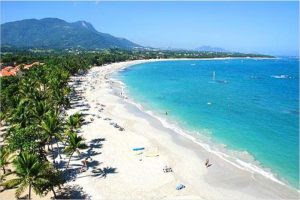
Puerto Plata on the north coast
To offer some perspective, the city with the lowest index at position number 50 in the 50 Most Dangerous Cities in the World list, New Orleans, in the United States, has 36.87 homicides per 100 thousand. Considering the population of Santo Domingo is 2.2 million to New Orleans’ 424,000: that is a significant difference from the Dominican capital, Santo Domingo, with 8.66 per 100 thousand inhabitants.
Regardless, as humans, we share in the profound sense of loss that these recent tragedies have caused their families, friends, and loved ones. We wish all our deepest condolences and hopes that they find support, healing, and recovery.
However, before we go jumping to conclusions or presumptions let’s wait until all facts and data are collected and the proper Dominican and American authorities have a chance to weigh in with the results of their respective investigations and toxicological tests.
If you are planning a trip to the DR but are a bit hesitant due to the latest incidents; there are lovely options other than the all-inclusive trip packages. Book a small local hotel or bed and breakfast with good reviews. Read up a bit about the area, town, or region you plan to visit and be prepared. Read the reviews and experiences of others who have visited your intended destination. Be careful about the water you drink, swim in, and use as ice. Make sure to wash any fruits, vegetables, or other foods in safely purified water.
Use common sense, avoid mixing alcohol with any medications, and make sure you are in decent enough health to travel because travel tends to cause new types of stress and demands on a person.
The DR hosted 6.6 million tourists in 2018. Of those, 3.2 million were American and another nearly 1 million were Canadian. The odds of becoming a victim of a lightning strike in the U.S. in any one year is 1 in 700,000. That’s about the same odds one would have of dying while vacationing in the DR. One’s odds of being killed in an automotive accident in the U.S. is 1 in 103 – yet, even so, few people panic or cancel their drives based on this fact.
Those of us who live in the DR: expatriates and Dominicans alike, know it as a place where our daily lives are lived. We work, we shop, we play, we love, we socialize, we win, lose, prosper, and suffer. But mostly we enjoy the many, many delights of the tropical island we call home.
Would we like law enforcement to be more efficient and the general infrastructure improved? Of course. But who wouldn’t? Most of the gripes people have about life here apply to many other nations as well – America included.

Looking across bay at sunset, Las Galeras, Samana.
There are of course dark spots and aspects here as there are in any land. But there is also a rich abundance of great, beautiful, warm-hearted people who despite all odds, find a smile to offer, a story to tell, and their wondrous enchanted country to so graciously share.
These are undoubtedly some cloudy, dust-darkened days. But this is the Dominican Republic. The dust will settle, the clouds will drift on by, and the soul-rejuvenating island sun and irrepressibly positive and hopeful spirit of the people of these Caribbean latitudes will come shining through once again.
Disclaimer: I am not a lobbyist of any kind or for anyone nor do I have any financial interests in any business – tourism or otherwise, in the DR or elsewhere. — Renn Loren


